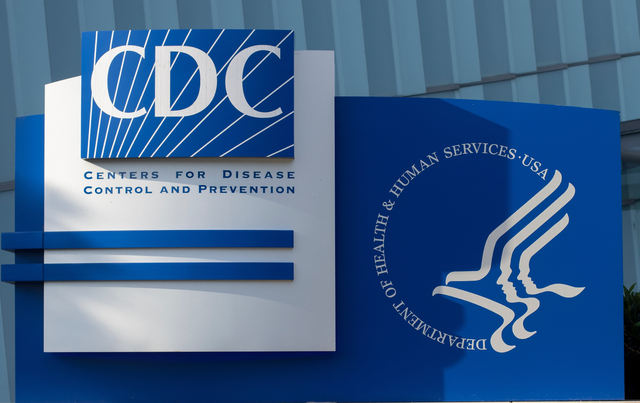Preventable healthcare-associated infections (HAI) are a significant cost for patients and hospital systems. The same goes for communicable diseases like the flu and COVID – the likelihood of which can often be mitigated through the widespread use of vaccines and other preventative safety measures.
The CDC’s National Healthcare Safety Network (NHSN) system exists to help healthcare facilities at the local, state, regional, and national level share data about these and other health outcomes. It also provides facilities, conditions, regions, and the nation with data needed to pinpoint problematic areas and gauge the effectiveness of prevention endeavors. As a result, it contributes significantly to the collaborative initiatives aimed at measuring, tackling, and preventing Healthcare-Associated Infections (HAIs) and the transmission of specific viral infections.
This article will provide a detailed examination of the NHSN and its significance for medical facilities, plus relay essential details and obligatory data criteria related to COVID and flu monitoring.
NHSN Requirements for Medical Facilities: Overview
Laws regarding NHSN reporting are determined state-by-state; however, reporting is mandatory for specific medical facilities and required for fulfilling certain requirements under the Centers for Medicare and Medicaid Services (CMS). Discluded facilities may still opt in regardless of jurisdictional NHSN reporting requirements since this type of reporting supports positive outcomes across the spectrum of care.
Medical facilities that must submit data to the NHSN include the following:
- Rehabilitation hospitals
- Acute care hospitals
- Outpatient facilities
- Nursing homes and other long-term care centers
- And more
As mentioned, the NHSN reporting requirements differ based on the facility’s type and location, but weekly data submission is typically mandatory. We suggest visiting the CDC website for more detailed information on resources and requirements specific to each type of facility. Ultimately, healthcare facilities need to check their reporting requirements with the relevant authorities to ensure compliance.
NHSN Vaccination Reporting for COVID-19 and Influenza
Since the beginning of the COVID-19 pandemic, NHSN vaccination reporting has proved essential for tracking vaccine progress and identifying places most at risk of widespread infection. This is in addition to the program’s pre-established utility in tracking flu vaccines locally and beyond.
With COVID-19 vaccine tracking systems in place, healthcare facilities can quickly and efficiently monitor employee vaccination rates, including accurate data on who has been vaccinated for COVID and who hasn’t, who has received boosters (and how many), and who has refused a COVID vaccine due to a religious exemption or other reason. Reporting for the flu is just as beneficial, as it allows facilities to keep track of individuals who have completed, are waiting on, or have declined the flu vaccine, as well as those who are scheduled to receive it soon.
Of course, it’s not just facilities that benefit from this information. It’s also a must for fulfilling NHSN flu reporting and COVID-19 reporting standards and must be carefully maintained and submitted to meet NHSN requirements.
National Healthcare Safety Network (NHSN) Reports
Whether reporting on HAIs, vaccines, or other NHSN-mandated data, the more straightforward the process, the better.
The National Healthcare Safety Network (NHSN) is the country’s most extensively utilized healthcare-associated infection (HAI) monitoring system. Aside from COVID and flu tracking, the NHSN system is designed to help healthcare facilities monitor, track, and report on various healthcare-associated infections, including bloodstream infections, surgical site infections, and other events. To use the NHSN system, medical facilities must first register and create an account. Once registered, they can access the NHSN web portal to report data on their patients and healthcare-associated infections. The system also provides facilities with reports to help them analyze their data and identify areas to improve infection prevention and control practices.
Once facilities receive NHSN reports, they are expected to analyze and use the data to improve patient safety and healthcare quality. This involves identifying trends or patterns in the data that indicate areas where improvements are needed. Facilities may also use the data to benchmark their performance against national or regional averages and set goals for improvement. Additionally, NHSN reports can inform decisions about infection prevention and control measures, such as which organisms to target with surveillance or which isolation precautions to implement.
Management of NHSN Reporting Requirements and Dashboards is Easier with Immuware
Managing, analyzing, and understanding NHSN reports and reporting requirements can be challenging, especially for medical facilities with limited resources and expertise. And because this data is crucial, healthcare providers must seek assistance from experienced professionals in navigating these reports and interpreting the data.
Immuware is a helpful solution for managing NHSN reporting and dashboards. Our tools and added expertise can help facilities not only manage submissions but interpret and analyze incoming health data for critical insights and plans of action.
Contact us today for a demo and to learn precisely how Immuware can help you take the guesswork out of NHSN reporting requirements.
